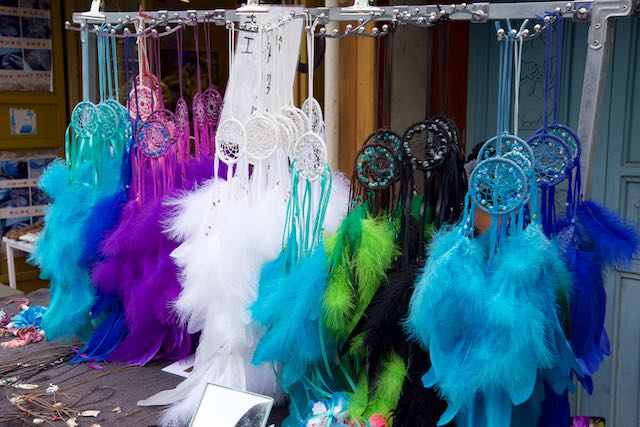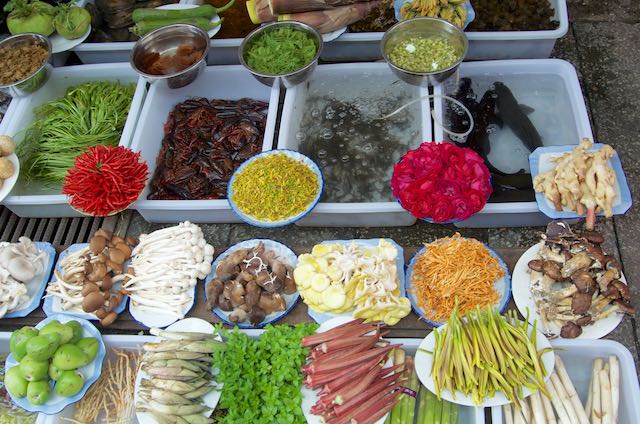For the final time, we walked down our narrow Lijiang alleyway having said farewell to our guesthouse staff and crammed our group and luggage into three small taxi vans that transported us to the main bus station a few kilometres away.
At 08:30 we started our 200 km journey southwards to Dali. We sat in the front seat upstairs in the modern and very comfortable coach. The new highway was divided almost all the way with two and sometimes three lanes in each direction. There were several tunnels two of which were about 4 km in length. There are numerous overhead signs along the highway warning drivers “not to litter, not to drive while drunk and not to follow too close to the car in front”. As is frequently the case most signs are very conveniently in both Chinese and English. Spelling errors occur quite commonly but we never criticise this and merely express gratitude as without the English names we would have enormous difficulties getting around.
The scenery on the drive south was of mainly rich alluvial soil over agricultural flatlands with bountiful crops of rice, corn, egg-plants and fruits. On the high eastern hillsides were several hundred wind turbines, presumably for generating electricity.
After three hours we arrived in Dali at an outer bus station and then caught taxis to our accommodation, the MCA Hotel which is right in the centre of town, just outside the old city wall.
Dali has the reputation as one of the most picturesque destinations in all of China. It is flanked on one side by the 4000 m Cangshan Mountains and on the other by the blue waters of Er Hai, Yunnan’s second largest lake.
After settling into our rooms we ventured out on an exploratory walk through the old town that is now a Mecca for tourists, particularly the Chinese themselves. This may well be due to Dali’s location at 2000 m and Dali having a year-round temperate climate. Tomorrow is the summer solstice and today’s temperature was in the high 20s.
Prior to China opening up to westerners in the 1980s, Dali was a quiet provincial town but with the advent of pioneering backpackers and group tours this area has become a drawcard for bus loads of Chinese and foreigners. This is aptly illustrated by the fact that the main street in Dali has been renamed Yangren Jie which translates to “Foreigners’ Street”.
As was the case with Lijiang there are both old and a new towns. Old Dali with its walled township is better known as Dali Gucheng. The newer city of Dali is about twenty minutes south by road and is called Xiaguan.
The walled town of old Dali was established around 500 AD and was a home for the Bai minority people. By the time of the Tang Dynasty, a local chieftain named Piluoge had unified six regional kingdoms into a southern kingdom called Nanzhao with Dali as its capital.
A walk through the old town on a Saturday market afternoon was an interesting and colourful experience. On sale were the usual tourist wares of silver jewellery, clothing hats, jade, drums, trinkets and loads of different vegetables and fruits. Amongst the plants on sale were lots of orchids and succulents plus strange branches and leaves presumably used in herbal medicine.
A popular specialty for Dali girls is to have their hair braided with colourful silk threads; these look very attractive and are often complemented by a small crown of many different intertwined flowers.
A street-side cobbler enticed Jak to have his shoes cleaned for a mere Y2 (less than 50c) that seemed a bargain. However, without asking the crafty devil proceeded to do some minor repairs and glued small pieces of rubber onto the heels. On completion of the work he duly asked for Y84, not the original Y2. Needless to say some stern bargaining followed and eventually we came to a mid price. He had done well out of the deal we feel sure.
We had a mid-afternoon luncheon in an off-street courtyard restaurant and then wandered our way back to our hotel to do washing and prepare for a full day of exciting activities tomorrow in and around Dali, including another 28 km bike ride.


















